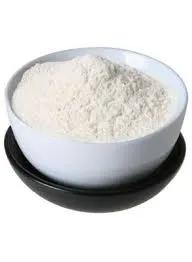
Ago . 10, 2024 14:00 Back to list
Safety Data Sheet Overview for Hydroxypropyl Methyl Cellulose Usage and Handling Guidelines
Understanding Hydroxypropyl Methyl Cellulose (HPMC) and Its MSDS
Hydroxypropyl Methyl Cellulose (HPMC) is a versatile, water-soluble polymer derived from cellulose, a natural biopolymer. Widely used in various industries, including pharmaceuticals, construction, food, and cosmetics, HPMC offers a range of beneficial characteristics such as thickening, gelling, and film-forming properties. Ensuring safety and proper handling of HPMC is crucial, and this is where the Material Safety Data Sheet (MSDS) comes into play.
What is HPMC?
HPMC is synthesized by modifying cellulose—the main structural component of plant cell walls—through etherification. This process introduces hydroxypropyl and methyl groups, enhancing the solubility and functionality of the polymer. HPMC is particularly appreciated in pharmaceutical formulations as a controlled-release agent, emulsifier, and stabilizer. Additionally, in construction, it improves the workability of cement and plaster, making it easier to apply while enhancing adhesion.
Applications of HPMC
1. Pharmaceuticals HPMC is used in drug formulations as a binder, coating agent, and controlled-release matrix. Its ability to form gels makes it suitable for sustained-release tablets and capsules.
2. Food Industry As a food additive, HPMC is utilized for its thickening and emulsifying capabilities. It is often found in salad dressings, sauces, and other processed foods to improve texture and maintain stability.
3. Construction In the construction sector, HPMC is included in mortars and adhesives to enhance workability and adhesion to surfaces. This results in improved performance of materials such as tile adhesives and cement plaster.
4. Cosmetics HPMC acts as a thickener and stabilizer in various personal care products, ensuring a smooth texture and consistent formulation.
hydroxypropyl methyl cellulose msds

Safety and Handling The MSDS
The Material Safety Data Sheet for HPMC provides essential safety information for handling and using this chemical compound. It includes data on physical and chemical properties, potential health hazards, safe handling practices, and emergency measures.
Key Information
1. Physical Properties HPMC typically appears as a white to off-white powder. It is odorless and has a high viscosity in solution, making it easy to use in various applications.
2. Health Hazards HPMC is generally considered non-toxic when handled appropriately. However, inhalation of dust can cause respiratory irritation, while contact with eyes may lead to irritation. Therefore, it is recommended to use protective gear, such as gloves and goggles, when handling HPMC.
3. First Aid Measures - Inhalation Move the affected person to an area with fresh air. If symptoms persist, seek medical attention. - Skin Contact Wash affected areas thoroughly with soap and water. If irritation develops, consult a physician. - Eye Contact Rinse eyes cautiously with water for several minutes. If contact lenses are present and easy to remove, do so. Continue rinsing and seek medical advice.
4. Storage and Disposal HPMC should be stored in a cool, dry place, away from direct sunlight. For disposal, follow local regulations, as it should not be discharged into waterways.
Conclusion
Hydroxypropyl Methyl Cellulose is an essential ingredient in numerous products across various industries. Its versatility is matched by the need for careful handling, as outlined in the MSDS. Awareness of the properties and potential hazards of HPMC is critical for safety in both industrial and consumer applications. By adhering to the guidelines provided in the MSDS, users can ensure safe and effective use of this valuable polymer.
-
Why HPMC is a Key Additive in Wall Putty Formulations
NewsAug.05,2025
-
Redispersible Powder in Decorative Renders: Function Meets Finish
NewsAug.05,2025
-
Redispersible Powder for Interior Wall Putty: Smooth Results Every Time
NewsAug.05,2025
-
HPMC’s Water Retention Capacity in Dry Mortar Applications
NewsAug.05,2025
-
HPMC Factory Contributions to Liquid Detergents
NewsAug.05,2025
-
How HPMC Factory Products Change Detergent Textures
NewsAug.05,2025







